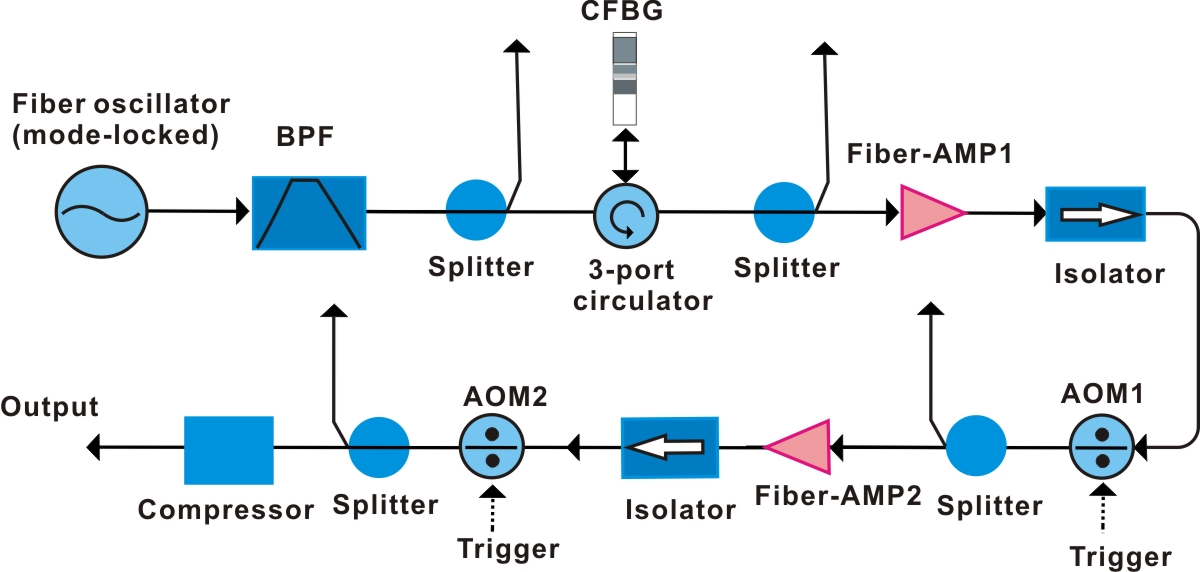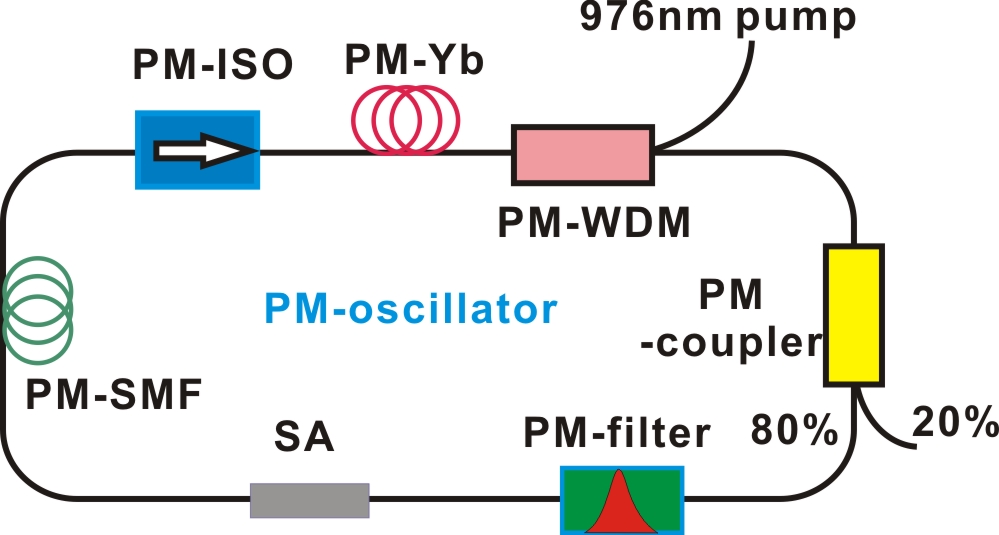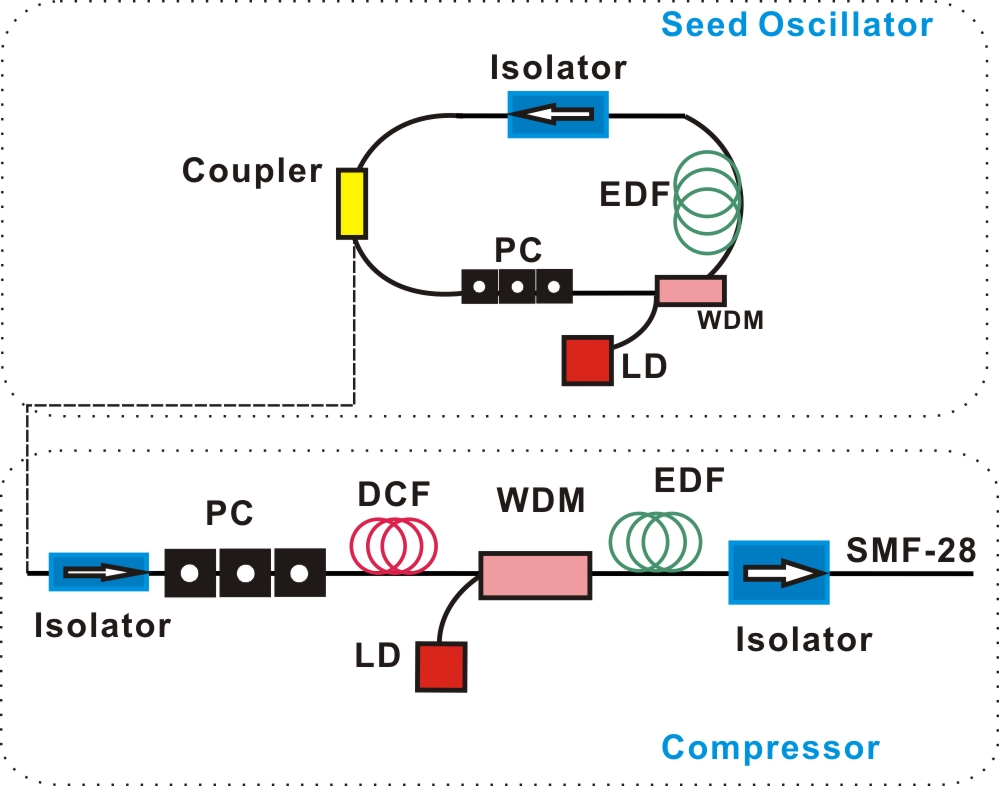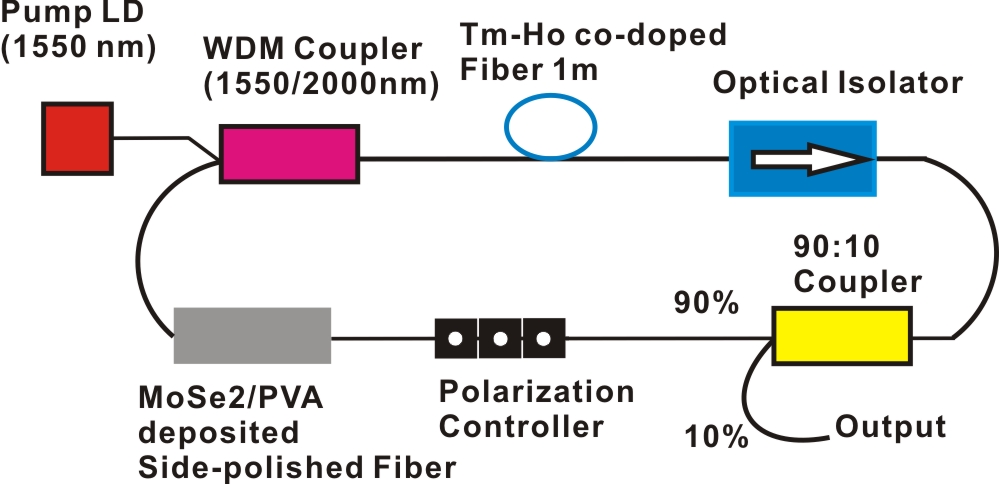Ultrafast Fiber Laser Applications
In general, the output of a direct femtosecond fiber oscillator has a pulse train repetition frequency on the order of ten megahertz to one hundred megahertz, and its average power is also in the range of several tens of milliwatts to one hundred milliwatts, so its single pulse energy is also On the order of a few hundred picowatts to nanowatts, even with a pulse compression device, the peak power is on the order of kilowatts, which is too low for many applications, especially biomedical and industrial processing applications.
The femtosecond fiber lasers typically include a one- or two-stage fiber amplifier that amplifies the laser from the seed source, so it can provide greater average power and peak power for a wider range of applications. For example, a white light source can be realized by using a femtosecond fiber laser connected with a highly nonlinear fiber; a femtosecond fiber laser can be used as a light source for biological multiphoton fluorescence microscopy imaging; an optical frequency comb octave spectrum A femtosecond fiber laser that also requires a watt level is pumped. Taking a 50MHz, 100fs, 5W femtosecond fiber laser as an example, the single pulse energy is 100nJ and the peak power is 1MW.
Structure and principle
A typical femtosecond fiber laser consists of three main components: a seed source, a fiber amplifier, and a dispersion compensation device. The seed source is generally a mode-locked fiber oscillator for oscillating output of the femtosecond laser; the fiber amplifier can be a pumping form using forward, return or bidirectional, and the doped fiber can be double-clad or single-package. The layer; the dispersion compensation device may be a dispersion compensating fiber, a blazed grating, a prism or a fiber Bragg grating.
The basic structure of a femtosecond fiber laser is specifically described below with an erbium-doped fiber laser based on a double-clad fiber amplifier. The following are some common ultra-fast laser structure diagrams:

Figure 1: Schematic of an ultrafast fiber laser configuration
Fiber oscillator: erbium-doped mode-locked fiber laser. For details, see the erbium-doped fiber-mode-locked laser solution Figure 2.

Figure 2: Setup of the low-repetition-rate, semiconductor SA mode locked, all-PM fiber laser.

Figure 3: 1550nm Ultrafast laser pulses for spectroscopy and biomedical applications

Figure 4: Schematic of a femtosecond pulse fiber laser at 1.91μm

Figure 5: Schematic of a 2000nm ultrafast fiber laser
Precautions:
Regarding fiber selection: The choice of fiber in the system needs to pay attention to the matching between the fibers, mainly the matching of fiber type (preservation or not, cladding type) and mode field diameter.
The spectrum before and after the amplifier is placed: the spectrum before and after the amplifier is slightly changed, and special attention should be paid when selecting the operating wavelength range of the device.
Pulse compression: Two transmission gratings must be placed in parallel, otherwise the beam quality will be degraded.
DK Photonics offers a variety of passive components for building ultrafast fiber laser systems, DK Photonics could provide pump combiner, circulator, isolator, tap coupler, collimator, WDM, in-line polarizer, and PBS with PM fiber or NO-PM fiber from 850~2000nm wavelengths. Contact DK Photonics regarding your requirements.
Click here to download the PDF file:





